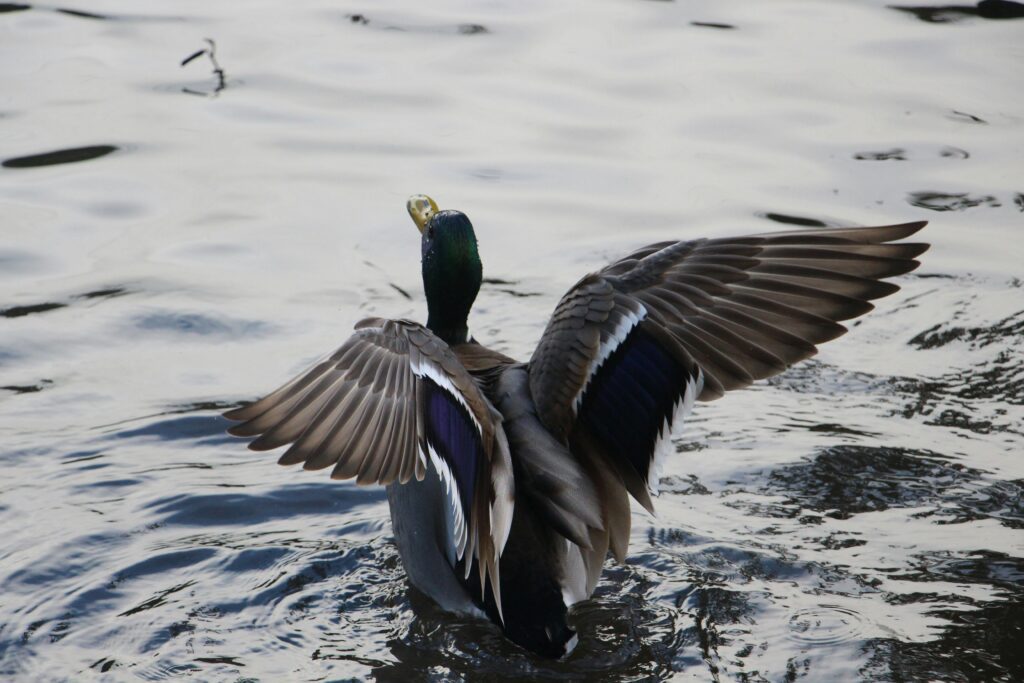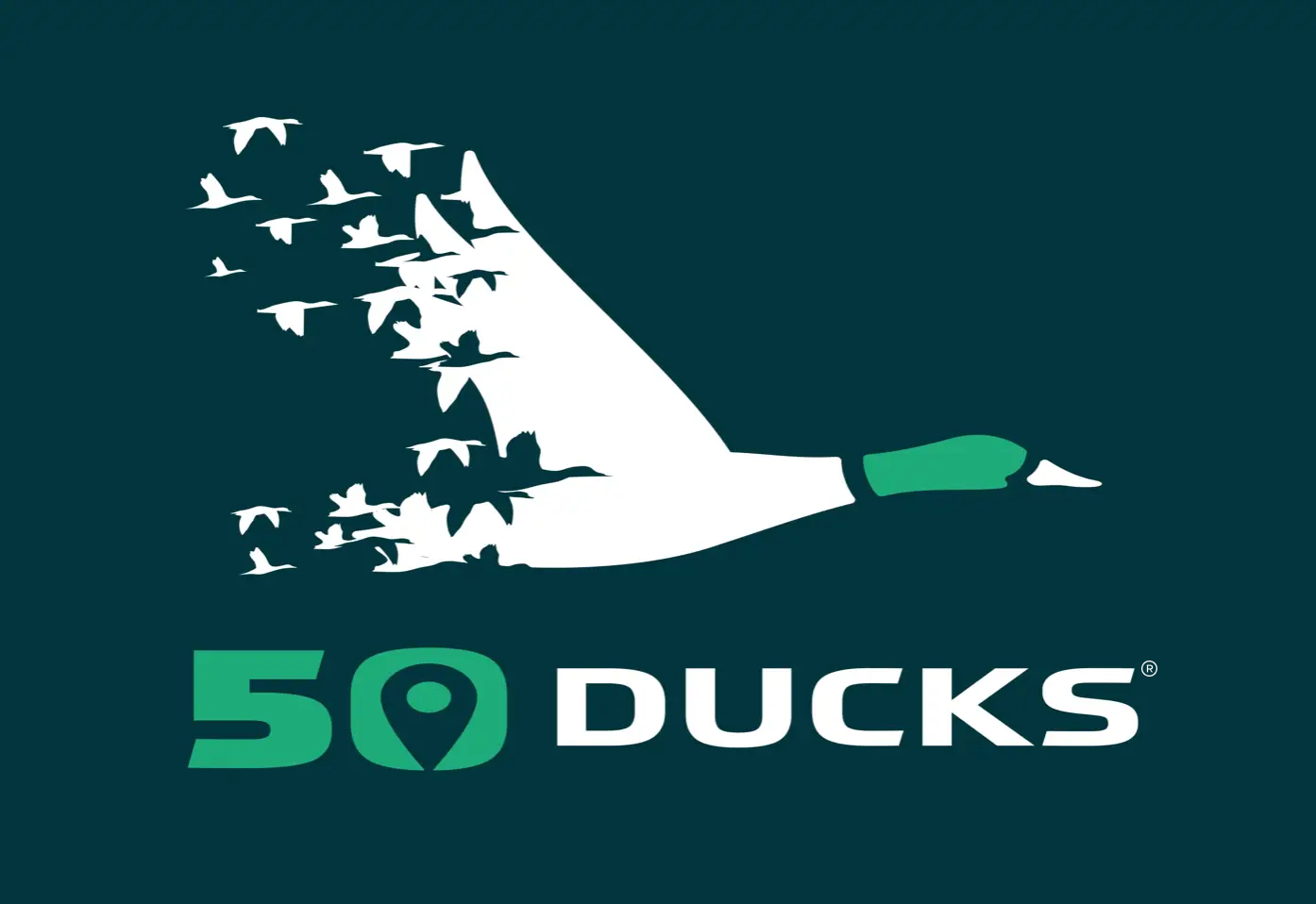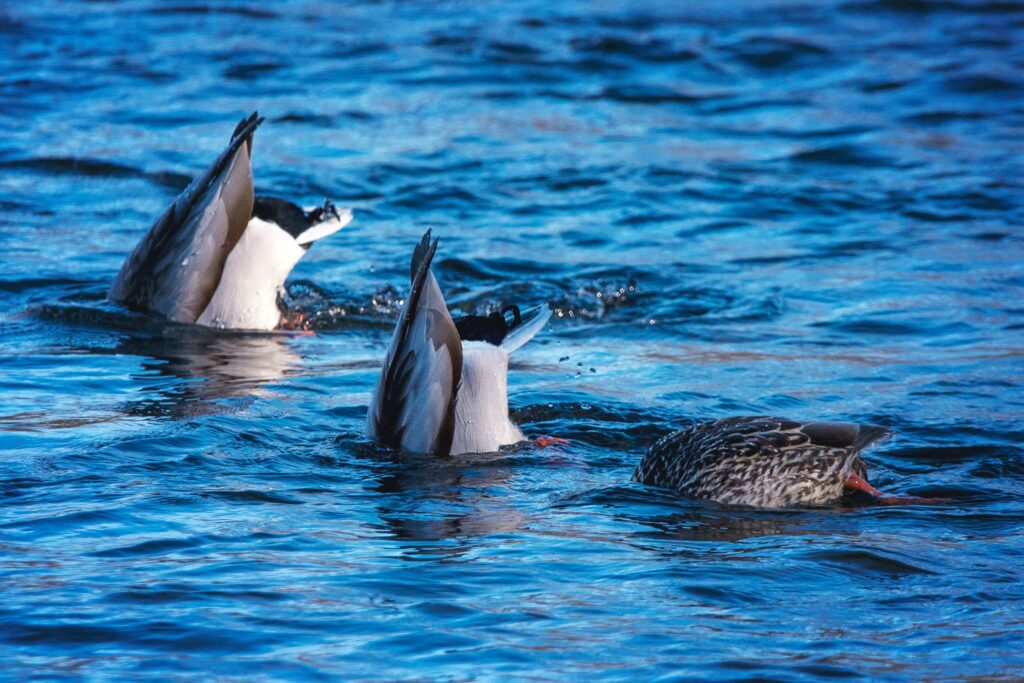Duck Anatomy: Duck Bills, Feet & More!
Greer Smith
January 22, 2024

Welcome to the captivating world of ducks! Our passion for waterfowl tracking and conservation has led us to gather some fascinating insights about these incredible creatures. Whether you’re a bird enthusiast, student or just getting started, get ready to explore and learn about the intriguing world of ducks.
Ducks have unique adaptations that enable them to thrive in several environments. From their feathers and duck bills to their feet and wings, each species possesses advantages over other avian birds do not.
Learning duck anatomy is important for developing a deeper appreciation for these creatures. In this article, we uncover the physiological features that make waterfowl so fascinating. Let’s dive in and explore the science behind these amazing birds.
Understanding the External Anatomy of Waterfowl

Unraveling waterfowl physiology requires a deeper understanding of their unique external features. Whether on land or in water, ducks boast unique characteristics that ensure survival in various climates. Let’s look closer at some vital aspects of duck anatomy.
Feathers:
Feathers are one of the most remarkable differentiators of breeds. These incredible structures serve multiple purposes, including insulation, waterproofing, and aiding in flight. The intricate design of feathers consists of interlocking barbs that create a smooth surface while providing excellent insulation against cold temperatures.
Mallards, Blue-Winged Teal, Pintails, and others display beautiful varieties of feather colors and patterns. Their feathers undergo molting cycles where old ones are shed and replaced with new ones. Feather maintenance is crucial for maintaining waterproofing properties, as ducks often preen themselves using oil secreted from a gland near the base of their tail.
Beak:
Duckbills are another prominent feature distinguishing this species from other birds. They serve as versatile tools for feeding and communication, with different breeds having varying beak shapes adapted to their specific habitats.
The shape and size of the beak can indicate diet preferences. Dabbling ducks typically have broad bills suited for grazing on vegetation at shallow depths. Divers, like the Eider, Canvasback, and Goldeneye, have narrower bills adapted for catching fish or crustaceans underwater.
Feet:
Ducks have webbed feet specially designed for efficient swimming through water bodies such as lakes, rivers, and bottomland forests. The webbing between their toes acts like paddles, allowing them to navigate effortlessly through aquatic environments.
With no nerve endings or blood vessels, their feet are less sensitive to extreme heat or cold. That means they have the necessary stability and propulsion to survive and can move swiftly, regardless of water temperature. Ducks can walk on land using their feet but are more comfortable in aquatic environments.
Understanding these external anatomical features provides valuable insights into how waterfowl interact with their surroundings and adapt to different climates and regions during migration.
Internal Duck Anatomy & Systems
Now that you understand the external characteristics, we’re ready to explore duck anatomy from the inside out. Let’s dive into the digestive, respiratory, and reproductive systems.
The Digestive System:
Waterfowl have highly efficient digestive systems for processing a varied diet. These omnivorous creatures have a taste for plants, insects, small fish, and aquatic vegetation. Here’s a quick breakdown of their digestive system:
Beak: Beaks, or duck bills, are essential for capturing and manipulating food items before ingestion.
Crop: Located at the base of their necks, each species has a crop to store food temporarily before further digestion.
Gizzard: Ducks rely on their gizzard to grind up or “chew” plant material or hard-shelled prey they consume.
Intestines: After passing through the gizzard, partially digested food enters the intestines, where the bloodstream absorbs the nutrients.
The Respiratory System:
Over centuries, an efficient respiratory system has evolved, allowing them to breathe while flying. Their unique adaptations include:
Lungs: Like most birds, ducks have lungs that extract oxygen from inhaled air and expel carbon dioxide during exhalation.
Air Sacs: Waterfowl also possess air sacs connected to their lungs, which help maintain buoyancy while swimming by providing additional air storage space.
Trachea and Syrinx: The trachea carries air from outside into the lungs while producing sounds using its syrinx – an organ found only in birds.
The Reproductive System:
Understanding how reproduction occurs is essential for appreciating the dynamics that foster species continuation. Here are some interesting components of their reproductive system:
Cloaca: Males and females have a single opening called the cloaca that serves as an exit for waste and a reproductive “vent” in most species.
Ovaries/Testes: Females have ovaries where eggs develop and mature before being laid; males have testes responsible for producing sperm.
Copulation and Fertilization: During copulation, males transfer sperm to females’ cloaca to fertilize the eggs.
By exploring these internal anatomical features, we can appreciate how they function physiologically. This knowledge also uncovers the “why” behind the survival strategies birds use for protection against predators.
Duck Anatomy Impacts on Lifestyle
As we explore every aspect of the duck anatomy, it becomes clear that each enables benefits that support a unique lifestyle. From effortlessly gliding through water to soaring gracefully through the skies, their magic never ceases to amaze. Let’s dig deeper to see how these unique characteristics contribute to their remarkable way of life.
Aquatic Adaptations:
Ducks need water and wetlands, and their physiology suits them perfectly for an aquatic lifestyle. Their bodies are streamlined with sleek feathers that repel water, allowing them to move swiftly and efficiently through lakes, rivers, and wetlands. These feathers also provide insulation against cold temperatures while keeping them buoyant on the surface.
Flight Capabilities:
While ducks prefer to spend most of their time in water, they are flying marvels. With powerful and flexible wings, taking off quickly from land and water surfaces is never an issue. The wing bones are lightweight yet sturdy enough to support sustained flight over long distances.
Feeding Mechanisms:
Each species has particular feeding habits. Because of this, duck bills are highly sensitive and make foraging for food an easier task. Some have broad beaks designed for filter-feeding smaller organisms like plankton or insects from the water’s surface or mud below it. Others possess narrow bills that can probe through soil or vegetation and feel for seeds and plant matter.
Diving Abilities:
Certain duck species have specialized adaptations that allow them to dive underwater in pursuit of small fish, tadpoles, and crustaceans. These adaptations include webbed feet that are bigger and located closer to the rear to increase power and speed when hunting.
Wrapping Up
In conclusion, understanding duck anatomy opens up new dimensions in our interactions with these incredible birds. It enables accurate species identification and contributes to conservation efforts. Through early detection of potential issues, we can proactively impact waterfowl health and natural habitats.
Beyond the knowledge, it deepens our admiration for nature as we marvel at its ability to create diverse and genetically suited organisms like ducks. Join us as we track these magical creatures across North America, Canada, and Mexico. There is always more to discover!

